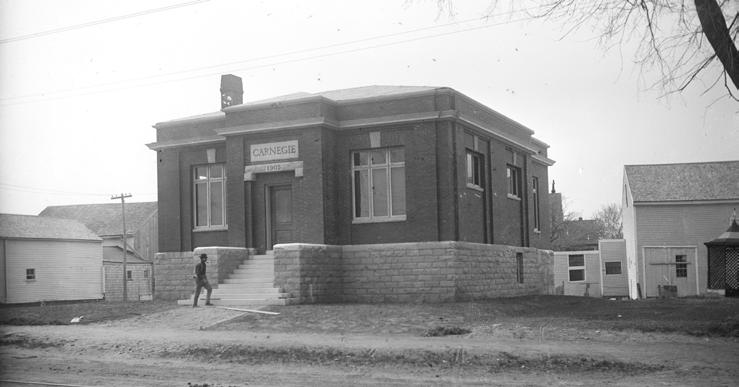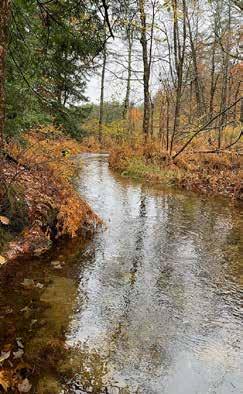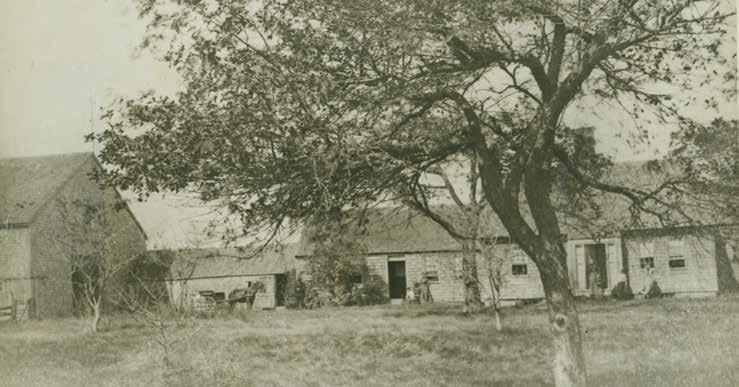
4 minute read
The Town Of Yarmouth An old seaport
by Charles Francis
The town of Yarmouth is one of the oldest seaports on the Maine coast. It is a town of quiet, treelined streets and gracious old homes as well as bustling new businesses that lies just a bit off the beaten track. To reach Yarmouth it is necessary to leave the main highway, and in doing so the traveler may feel that he or she has taken a step back in time. It is a step away from the faster-paced life of the larger communities of the region and back into a time when life revolved around the changes of the seasons. When visiting the town today, it is somewhat difficult to visualize it as it once was — one of the most important ports in the world, a port where fishing and merchant vessels once filled its harbor as they loaded and unloaded cargo. Nor is it easy to see it as a town where its earliest settlers lived in fear of their lives. Yet that is Yarmouth. But what Yarmouth? Or better yet, which Yarmouth, for there is more than one.
Advertisement

The above description could be that of any of four towns bearing the name Yarmouth. The oldest of the four, all of which are seaports, is, of course, Yarmouth, England. The next oldest is usually identified as Yarmouth, Massachusetts. The last two are Yarmouth, Nova Scotia and Yarmouth, Maine. Which of the latter three is older depends on one’s viewpoint, however. Yarmouth, Nova Scotia was incorporated as a town before Yarmouth, Maine. The Maine town was first called Westcustago by the settlers who arrived there at the same time as those who settled Yarmouth on Cape Cod. When the name was changed here in Maine, it was originally called North Yarmouth to distinguish it from the one (cont. on page 12)
(cont. from page 11) on Cape Cod. But both towns in the United States were settled before the Canadian Yarmouth.
Strictly speaking, all four towns named Yarmouth bear a name that denotes a geographical location at the mouth of a river. The river is the river Yare. Yare is an old English word meaning nimble, which certainly fits for Yarmouth, Maine, as the Royal River is as nimble a river as the Yare in England. Neither of the other towns named Yarmouth, however, are graced by anything resembling a river, much less a nimble one.
One of the newer initiatives in furthering the development of international goodwill is the sister-city movement where towns far removed from each other declare themselves adopted. For example, Cooperstown, New York, which calls itself the birthplace of baseball, and Windsor, Nova Sco- tia, which claims a similar distinction as the birthplace of hockey, are sister cities. In like manner, a mini cottage industry has sprung up with coffee-table books filled with pictures and descriptions of towns bearing like names. In fact, one of the first of these, Towns of New England and Old England, had as its centerpiece Yarmouth, England and Yarmouth, Massachusetts. However, it made no mention of either Yarmouth, Nova Scotia or Yarmouth, Maine, each which have many similarities to the first town bearing the name of Yarmouth as well as to each other and the Yarmouth on Cape Cod.
All of the towns bearing the name Yarmouth first owed their livelihood — at least in part — to fishing. The first settlers on the Royal River, as it was first known, named after William Royall, began arriving in the 1630s due to the reports of the area’s abun- dant timber, game, and fish. While the same attractions led to the settlement of the other Yarmouths, that is just the beginning of the coincidences linking the four.
The residents of Yarmouth, England suffered early on from the depredations of marauding Danes. In like manner the earliest residents of Yarmouth on the Cape and Yarmouth in Nova Scotia lived in fear of Indian attack. The Plantation of North Yarmouth in the District of Maine was attacked and destroyed three times by Indians. Each time, however, the settlers returned to rebuild their log cabin homes. In fact, one of the most famous settlers of North Yarmouth, an Indian Scout named Joseph Weare, whose brother-in-law was killed by Indians, vowed to kill an Indian for every drop of blood lost by his brotherin-law.
One of the most unique coincidenc- es involving all four of the Yarmouths involves John Winthrop, the governor of the Massachusetts Bay Colony. Winthrop, as governor of the colony, was, of course, often seen on the dirt roads of the Cape Cod Yarmouth. Winthrop also visited the other three Yarmouths.


John Winthrop sailed on the Arbella for the New World from Yarmouth, England. The Bay Colony claimed jurisdiction over Maine and established trading posts at Cushnoc (Augusta) and Castine. Winthrop stopped at Westcustago at least once on his way further downeast and even sailed to the Bay of Fundy, landing near the future site of Yarmouth, Nova Scotia to investigate the possibility of establishing an English presence there to counter that of the French at Port Royal.
All four towns named Yarmouth are almost synonymous with the sea. In fact, a character in a novel once said, “If land [in Yarmouth] had been a little separated from the sea, and the town and the tide had not been quite so mixed up, like toast and water, it would have been much nicer.” Later this same character did say he had done the town an injustice.
The character was Charles Dickens’ David Copperfield. Dickens must have had a special place in his heart for Yarmouth, England for he used the town as a setting several times. In fact, his description of Mr. Peggotty’s house, which was actually a derelict ship on the Yarmouth shore, is one of the most famous in all literature.
Charles Dickens visited Massachusetts, Maine, and Nova Scotia. There is no record of his ever having actually visited the Yarmouths bearing the name of that oldest one in England. One wonders how he might have described them had he done so.














